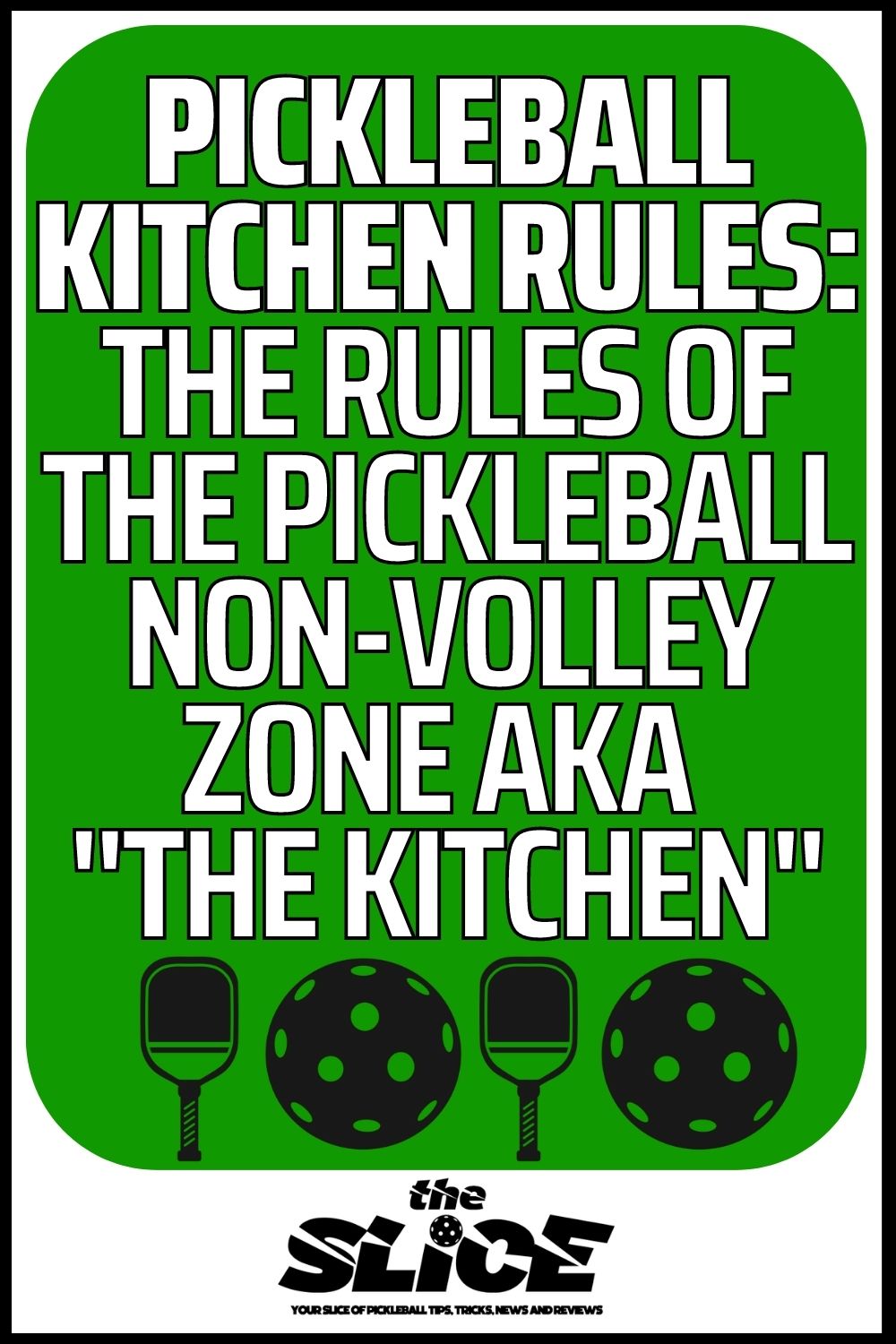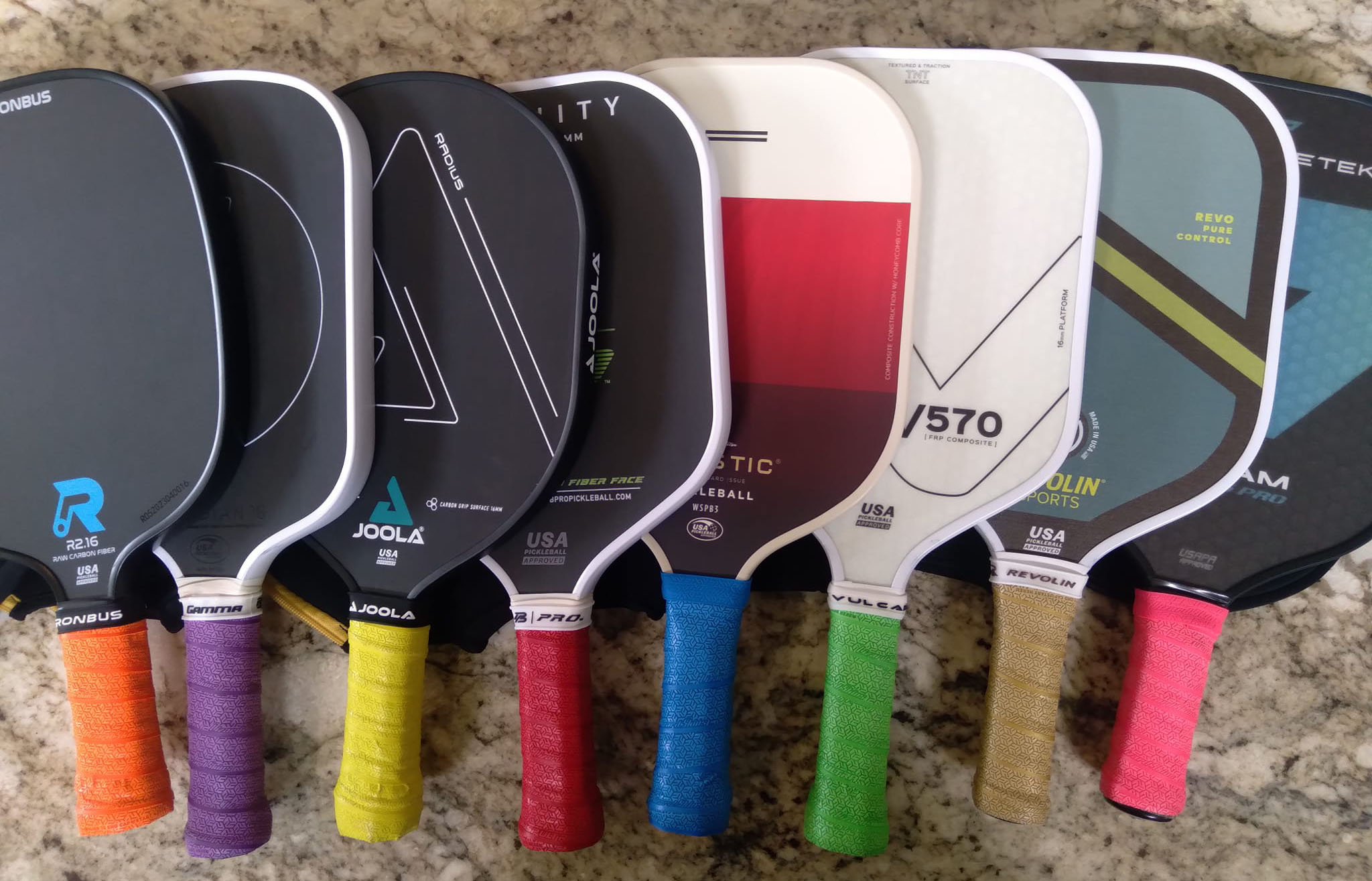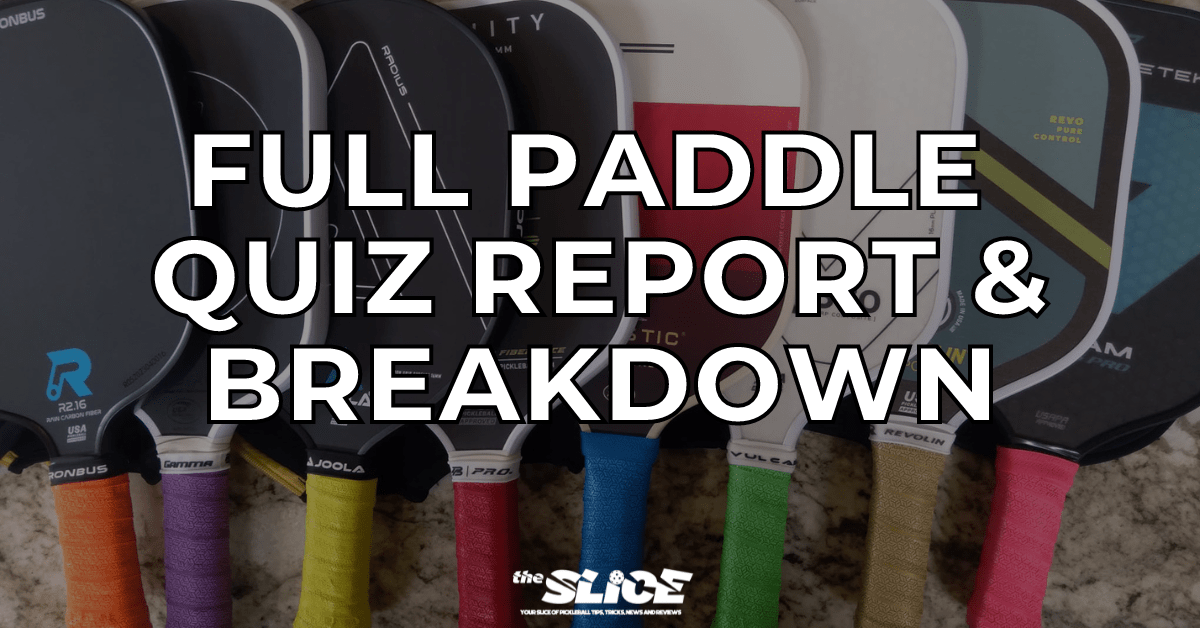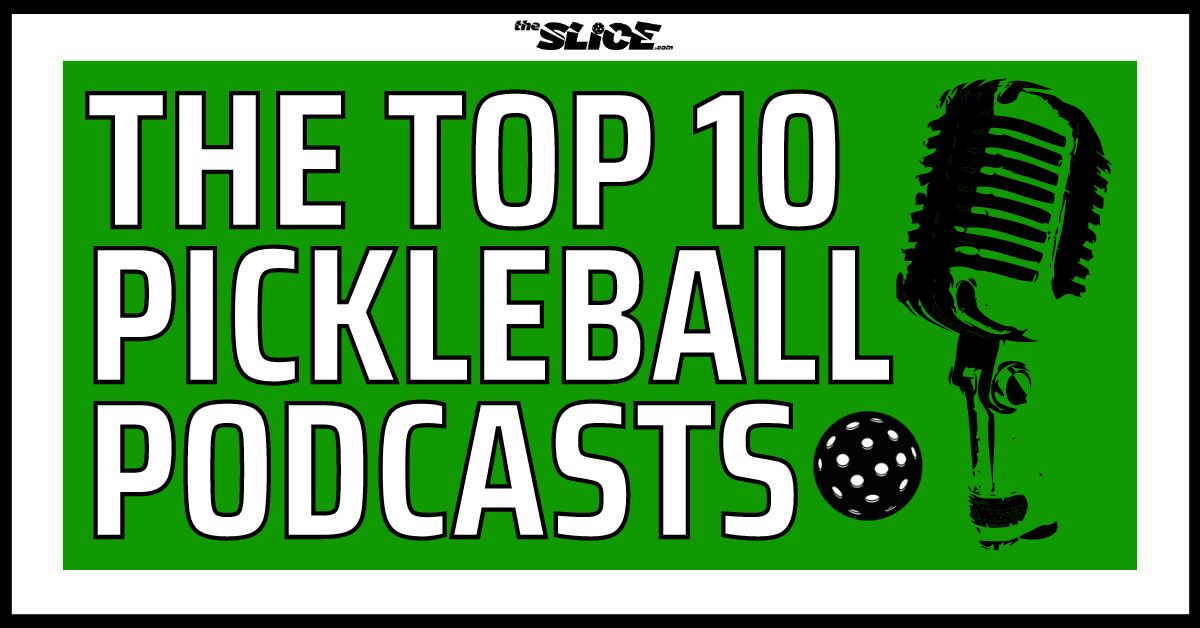
What is "the kitchen" in pickleball?
Well, the kitchen is actually the non-volley zone, it is just more often referred to as "the kitchen", and it is the the seven feet on either side of the pickleball net.
The 14 feet area in the middle of the court, referred to as the kitchen, the non-volley zone, or even the NVZ, has some unique rules that make pickleball extremely fun and different than some other sports you may be used to like tennis, badminton, ping pong and others.
When they first created pickleball the kitchen actually didn't exist, but they had a friend that was much taller than the rest of them that would always come by to play and make his way up to the net and make it virtually impossible to get balls by him, as he continued to smash them down and out of play - winning the point.
So, to fix this issue that would obviously be recreated over and over again, they decided you needed to be seven feet back from the net, and the non-volley zone was born.
But, technically speaking, there are times that you ARE allowed to enter the non-volley zone, so let's go over some basics to get us started, and then we'll break them down a bit further below.
Pickleball Kitchen Rules - The Basics to Remember:
- NO Volleying in The Non-Volley Zone (The Kitchen): Volleying is when you take the ball out of the air and hit it back to your opponent. This is not permitted in the kitchen (or even while touching the kitchen line).
- You CAN Step in The Non-Volley Zone (The Kitchen) at Certain Times: If the ball bounces in the kitchen you are allowed to hit the ball (or even preemptively enter the kitchen to eventually hit it, so long as you wait for it to bounce), or step into or on the kitchen line even when the ball doesn't bounce in the NVZ, as long as you don't play the ball while in there (you can move around and enter/exit/touch the kitchen while not volleying).
- You CAN Play AROUND The Non-Volley Zone (The Kitchen): There are special plays like the Erne and even the Bert that allow you to jump over the kitchen and still play the ball much closer to the net.
I'll be breaking these down further below, but this is a basic ruleset to remember about the kitchen, aka the non-volley zone, in pickleball.
Don't worry about hitting your first Erne just yet (and definitely not Bert), first let's master playing around the kitchen and how you can be proactive to your opponents' returns.
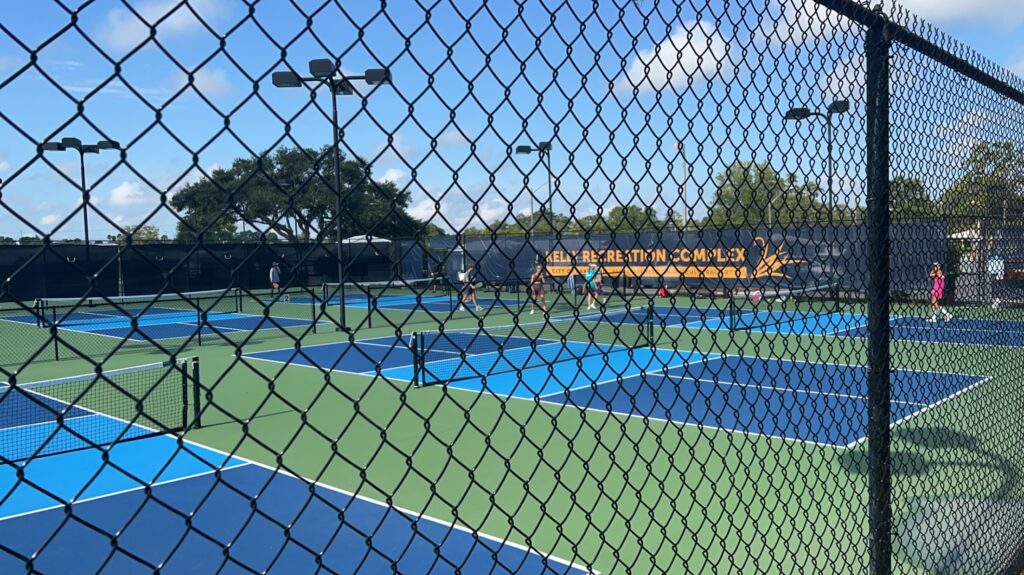
Pickleball Kitchen Rules: No Volleys Inside The Non-Volley Zone AKA The Kitchen
The name "Non-Volley Zone" should have given you a hint about where we were going to start and what the rules were going to be like for the kitchen, but it's not always as simple as it seems.
The rules of the non-volley zone are exactly what make pickleball unique and give it it's own specific style of play.
So, without further ado, let's start breaking down the ways you can be called for a "Foot Fault" in pickleball; which is when you step inside (or on the line) the kitchen, aka non-volley zone, when you're not permitted to:
- Stepping inside or on the line of the Non-Volley Zone while hitting a volley (a ball out of the air).
- Coming in contact with your partner (or anything else) that is touching or inside the Non-Volley Zone while hitting a volley (ball out of the air).
- Dropping your paddle, sunglasses, headband, wristband, hat or any other article in your possession into the Non-Volley Zone while in the act of hitting a volley (ball out of the air).
- Allowing your paddle, hand or any other part of you or your possessions to make contact with the Non-Volley Zone after making contact with the pickleball during a volley (out of the air); including grazing the ground with your paddle or arm/hand.
- Stepping into the Non-Volley Zone due to your own forward motion or momentum after hitting the pickleball outside of the Non-Volley Zone on a volley (out of the air). You are still at fault even if the play continues as your momentum is going forward (or you are falling) and the pickleball or play becomes dead. You must be able to regather your balance and position outside the kitchen in order to not be at fault.
The last one is the one most people get confused with, even the pros, so it's safe to just automatically remember that you can not fall into the non-volley zone at any time (fall or get taken into with your own momentum) after returning the ball from outside the kitchen without completely regathering yourself outside of it.
I have seen players come running up from the baseline to play a drop shot and have their momentum take them into the kitchen because they can't stop, and even though they return the ball over the net, they unfortunately lose the point because of a foot fault.
The rest of the rules of staying out of the non-volley zone are fairly simple, but there are a couple more things you should know about it.
For example, when you CAN enter it and play a ball, and how you can avoid it and still return (or crush) a ball closer to the net.
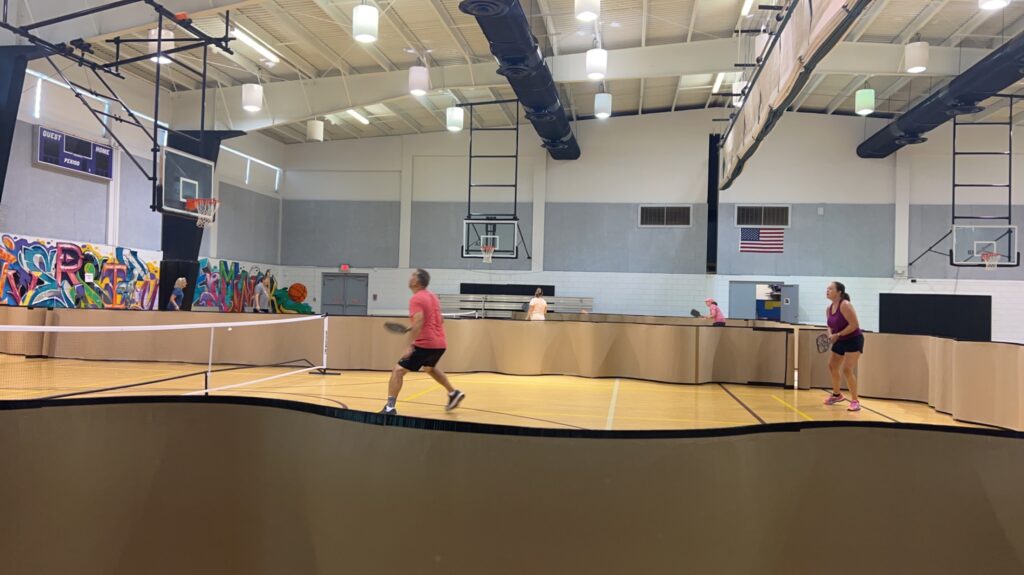
Pickleball Kitchen Rules: When You Can Step Inside The Non-Volley Zone AKA The Kitchen
There is actually a decent amount of the game of pickleball played inside the non-volley zone, so knowing the rules around it are extremely important.
Being scared to enter it to avoid being called for a foot fault can definitely cost you some points and you'll need to familiarize yourself with it to improve your own game and be comfortable knowing when the right time is to enter.
If you're still a beginner you probably already know all of the pickleball scoring rules, but the pickleball kitchen rules are going to be just as important when it comes to improving your rating and overall gameplay.
Three of the most important things to remember about the pickleball non-volley zone AKA the kitchen are:
- You can enter the non-volley zone and hit the pickleball after it bounces inside the non-volley zone.
- You are not at fault if you stand on the non-volley zone line or within the non-volley zone at any time without volleying the pickleball, including when your partner return a volley.
- You can preemptively enter the non-volley zone if you then wait for the ball to bounce inside of it before returning the pickleball.
The third one is something a lot of players are scared to do, and even the first one messes up a lot of players between 3.0-4.0 rating.
It can be confusing to know when you want to play a ball out of the air or step in and wait for it to bounce, and positioning and movement are extremely important.
A lot of the time these things come simple through reps and drilling (drilling being one of the things on our list of the top five tips to increase your pickleball rating from 3.0-4.0+, for example), but other times it will really come from a good awareness and comfort of playing around and at the kitchen line.
I have seen a lot of players hesitate to know how to play a ball and end up missing (or miss-hitting) an easy shot.
I have also seen a lot of players think they can take it out of the air and then realize they don't have the reach to make a good play and instead of stepping in and waiting for the bounce they continue waiting behind the line and lose an easy point.
Knowing when you can and cannot play the ball in the kitchen is going to be vital to moving up the ranks in pickleball, so make sure you're aware of the right times to step in, and the right times to wait outside the line (or take the ball out of the air).
Pickleball Kitchen Rules: What Is An Erne in Pickleball? What is a Bert?
One of the most fun shots in pickleball is called the Erne.
The Erne is a shot named after Erne Perry, which is a player who brought the shot to mainstream competitive play.
The Erne is a shot in pickleball where you hit the pickleball in the air as you are jumping over or around the Non-Volley Zone, aka the kitchen.
It is also considered an Erne if you run around the kitchen and re-establish yourself out of bounds, to the side of the non-volley zone, in order to successfully hit a volley closer to the net.
Though, I have to admit, the first one is obviously the much cooler version of it.
A Bert is also a really cool, advanced pickleball shot, and the only difference is that it takes place in front of your partner.
So while an Erne is just you jumping over the non-volley zone, a Bert is when you hit an Erne directly in front of your partner.
Below is a video of That Pickleball Guy, one of the awesome YouTubers on our list of the top ten pickleball YouTube channels, breaking down the Erne.
Pickleball Kitchen Rules Recap: What To Remember About The Kitchen AKA The Non-Volley Zone
Another side note to remember about the pickleball kitchen rules, which is also broken down in our pickleball serving guide, is the fact that serves may not land inside the non-volley zone (or on the non-volley zone line) either.
Outside of that, you should be all good to go and ready to play around (or even in) the kitchen in your next pickleball game.
Here are some important things to recap and remember about the pickleball non-volley zone, aka the kitchen, before you head off:
- You can not hit the ball out of the air (a volley, without it bouncing) while standing inside the kitchen, or on the kitchen line.
- Your momentum can not bring you inside of the kitchen after hitting a volley.
- Your paddle, body, or any other object of yours (hat, sunglasses, etc.) cannot touch, skim or land inside the non-volley zone after hitting a volley.
- Any of the faults above are a loss of that point.
- You CAN enter the kitchen if the ball bounces inside of it.
- You CAN also enter the kitchen preemptively to get a ball that bounces inside the kitchen.
- You CAN touch the kitchen line or step inside the kitchen during play, as long as you are not personally returning the ball via a volley.
Generally, you want to do your best to stay out of the non-volley zone in pickleball - also known as the kitchen or NVZ - but it is extremely important to also known when you are allowed to enter it and take control of a point.
If you have any questions about the non-volley zone please comment below!
If I missed anything you think would be good to add for beginners please also let me know so I can make this article even better.
If you're looking for pickleball paddle reviews, you've come to the right place, because I spend far too much money on paddles to make sure you guys don't have to.
